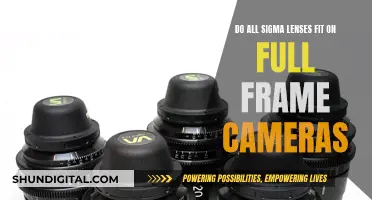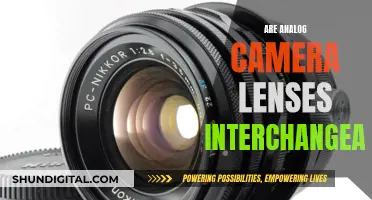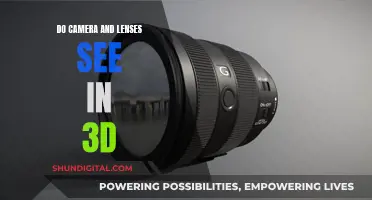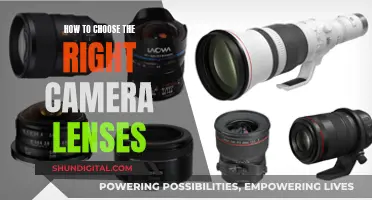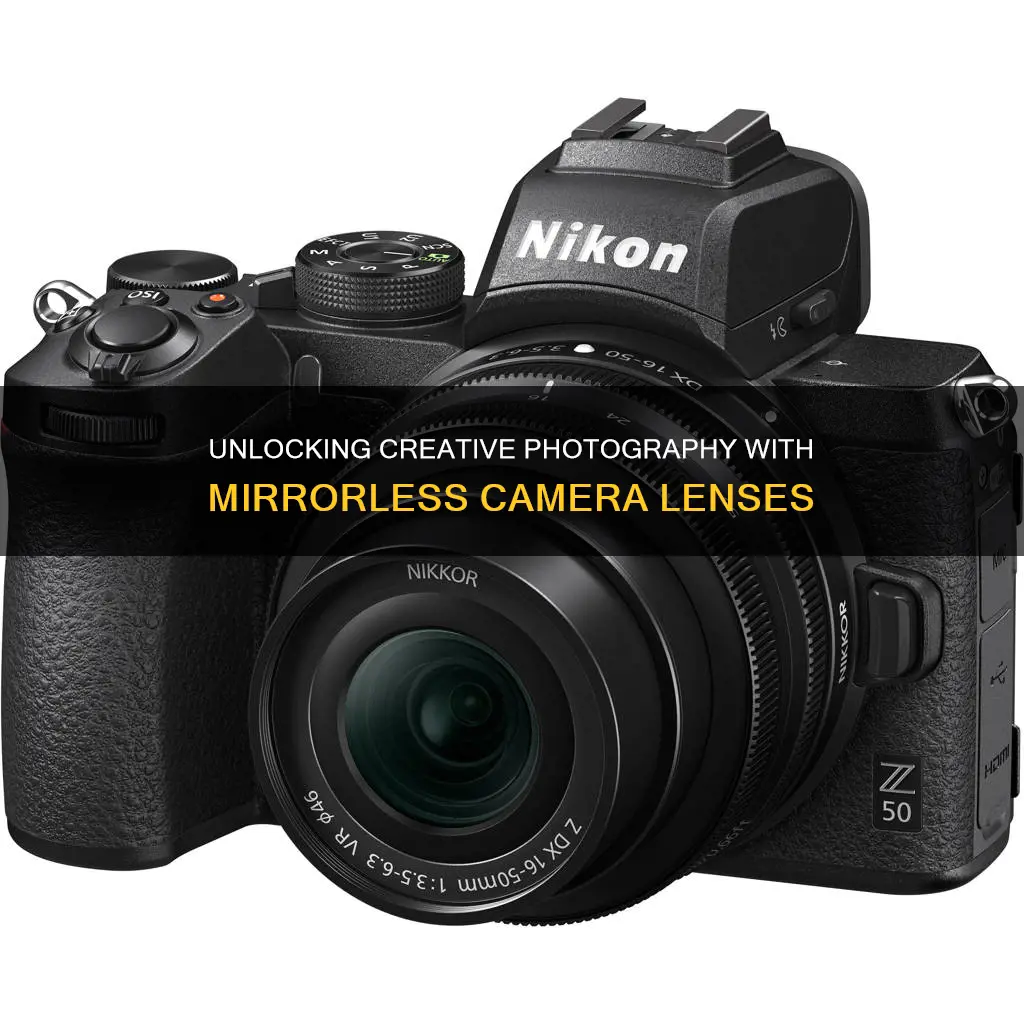
Mirrorless cameras are a type of camera that does not require a mirror, a key component of a DSLR (Digital Single Lens Reflex) camera. The absence of a mirror in mirrorless cameras allows for a more compact design, making them a popular choice for photographers seeking a lightweight and portable option. One of the distinctive features of mirrorless cameras is their interchangeable lenses, which offer versatility and expanded creative possibilities.
When choosing lenses for a mirrorless camera, several factors come into consideration. Firstly, the type of photography you intend to do plays a crucial role. For example, portrait photographers often prefer prime lenses with a fixed focal length, typically around 50-85mm, to capture flattering images of the human face. On the other hand, wildlife and sports photographers usually require telephoto lenses with longer focal lengths to capture distant subjects. Additionally, low-light photography calls for fast lenses with wider apertures (lower f-stop numbers) to allow more light to enter the camera.
Another important consideration is the lens mount. Lenses are typically designed for specific brands, such as Nikon or Sony, and sensor sizes like full-frame or APS-C. Using a lens designed for a different brand or sensor size may require an adapter, and it's generally recommended to use lenses designed specifically for your camera.
Different lenses also offer varying levels of optical quality, autofocus performance, image stabilisation, and manual focus capabilities. It's essential to strike a balance between your budget and the features you require to make an informed decision when investing in lenses for your mirrorless camera.
| Characteristics | Values |
|---|---|
| Lenses | Wide and super-wide angle lenses, prime lenses, 50mm normal lenses, standard zoom lenses, telephoto lenses |
| Focal length | The lower the millimeter (mm) number on your lens, the wider your picture will be. |
| Sensor size | Full Frame (the largest), APS-C (middle size), and Micro Four Thirds (the smallest) |
| Lens mount | Canon EF-M, Nikon FT1, Sony E-mount, etc. |
| Viewfinder | Electronic viewfinders (EVF) |
| Video capabilities | Full HD, 4K |
| Wireless functionality | Wi-Fi, NFC |
What You'll Learn

Prime lenses are sharper, smaller, and lighter than zoom lenses
Prime lenses are a great choice for photographers who want to capture sharp and stunning images with minimal gear. Here's why prime lenses are sharper, smaller, and lighter than zoom lenses:
Sharpness
Prime lenses are renowned for their exceptional sharpness compared to zoom lenses. This is mainly because prime lenses have a fixed focal length, which allows for a simpler optical design with fewer moving parts. As a result, prime lenses can achieve higher resolution and produce images with finer details. The difference in sharpness is especially noticeable when shooting with wider apertures, as prime lenses tend to outperform zoom lenses in terms of image quality.
Size and Weight
The fixed focal length of prime lenses also contributes to their compact size and lightweight design. Without the need for additional zoom mechanisms, prime lenses are typically smaller and lighter than their zoom counterparts. This makes them ideal for street photographers who want to remain discreet and travel light. The smaller size of prime lenses also means they can be designed with a shorter focal length, resulting in an even more compact setup.
Versatility
While prime lenses offer a single focal length, they often provide a wider aperture range, allowing for more creative control over depth of field and low-light photography. The larger apertures of prime lenses let in more light, making them excellent for capturing sharp images in low-light conditions. Additionally, the lack of moving parts in prime lenses makes them more durable and less prone to wear and tear.
Image Quality
The optical design of prime lenses, with fewer lens elements, also contributes to better image quality. With a simpler construction, prime lenses can produce images with higher contrast and richer colours. The absence of a zoom mechanism means that prime lenses can be optimised for a specific focal length, resulting in superior image quality.
Cost-Effectiveness
Prime lenses often provide excellent value for money. Despite their superior sharpness and image quality, prime lenses are usually more affordable than zoom lenses. This makes them a popular choice for photographers on a budget or those looking to invest in multiple lenses to cover different focal lengths.
In summary, prime lenses offer several advantages over zoom lenses, including sharper images, a more compact and lightweight design, greater low-light performance, and enhanced image quality. These benefits make prime lenses a favourite among photographers who want to capture stunning images with minimal gear.
Rebel XTi EOS Lenses: Compatible Cameras for You
You may want to see also

Wide-angle lenses are good for street photography
Wide-angle lenses are a great choice for street photography. They are the favourites of street photographers as they allow them to record the drama of people going about their daily lives.
The main benefit of wide-angle lenses is that they provide more visual context. They show much more of the background than telephoto lenses, which tend to flatten the background and isolate the subject. This means that the viewer gets a better sense of what is going on and what the story is behind the image.
However, this can also be a challenge, as it requires careful composition to ensure that the additional background elements are used constructively and don't detract from the subject. It also means that the photographer has less control over the final image as they can't control what is happening in the background.
Another benefit of wide-angle lenses is that they allow photographers to get closer to their subjects. This can help them capture details that they wouldn't be able to from a distance. It also makes the camera seem smaller and lighter, which can help with movement and stealth.
However, this can also be a disadvantage as some photographers may not want to get too close to their subjects. Additionally, wide-angle lenses can distort the image, especially if the subject is too close to the lens.
Overall, wide-angle lenses are a great choice for street photography as they provide more context and allow photographers to get closer to their subjects. However, they require careful composition to ensure that the additional background elements are used constructively.
Analog Camera Lenses: Interchangeable or Not?
You may want to see also

Telephoto lenses are good for sports photography
Telephoto lenses are great for sports photography as they allow you to get close-up shots of athletes from a distance. They are especially useful in large venues such as baseball stadiums or soccer fields, where you might be confined to shooting from the stands. The longer focal length of a telephoto lens means you can capture tight crops of athletes' faces, complete with perspiration, or focus on unique details like a player's hair or sweat flying off their body.
Telephoto lenses also offer a different aesthetic quality to your sports photography. The telephoto compression effect makes backgrounds appear closer and larger, enhancing the background bokeh and lifting the overall look of the image. This can help to simplify backgrounds and make athletes stand out.
In addition, telephoto lenses often have fast apertures, which are ideal for sports photography as they give you more control over your exposure settings and allow you to work in low-light conditions. This is further enhanced by image stabilisation, which is a feature of many telephoto lenses. Image stabilisation helps to reduce the effects of camera shake and motion blur, allowing you to use slower shutter speeds with less risk of blur. This is particularly useful when shooting in low light or capturing fast-moving athletes.
Telephoto lenses also tend to have fast and reliable autofocus motors, ensuring you never miss a shot. Some lenses even have eye-detection autofocus, allowing you to easily focus on athletes' faces.
Overall, telephoto lenses are a great choice for sports photography as they offer the magnification, aperture, and stabilisation features needed to capture sharp, close-up shots of athletes from a distance.
EF Lenses: Compatible with Crop Sensor Cameras?
You may want to see also

Super-telephoto lenses are good for wildlife photography
Super-telephoto lenses are a must-have for wildlife photography. They allow you to capture images of animals from a distance without disturbing them. These lenses are typically anything over 300mm, with the focal length starting at 400mm being where the weight and cost of the lenses start to increase significantly.
Super-telephoto lenses are ideal for wildlife photography as they enable you to get close-up shots of animals that are far away. This is especially useful when photographing easily spooked animals or those that are in an inaccessible location. The long focal length of these lenses means you can capture clear and detailed images, even when your subject is far away.
Additionally, super-telephoto lenses often feature advanced optical construction, accurate image stabilization, and quick autofocus motors. These features further enhance your ability to capture sharp and focused images of wildlife.
When choosing a super-telephoto lens for wildlife photography, consider the sensor size of your camera. Cameras with APS-C and Micro Four Thirds sensors have crop factors that will give you even more reach, making them ideal for wildlife photography.
Another important factor to consider is the aperture of the lens. Faster apertures are less common in super-telephoto lenses, and the faster options tend to be larger and more expensive. If you prioritise speed and quality, a wider aperture such as f/2.8 may be preferable. However, if portability and cost are concerns, a narrower aperture such as f/4 or f/5.6 may be more suitable.
Some popular super-telephoto lenses for wildlife photography include the Tamron SP 150-600mm f/5-6.3, the Sigma 60-600mm f/4.5-6.3, and the Canon RF 100-500mm f/4.5-7.1. These lenses offer a range of focal lengths and apertures to suit different needs and budgets.
Super-telephoto lenses are a valuable tool for wildlife photographers, allowing them to capture stunning images of animals in their natural habitats without disturbing them. With their long focal lengths and advanced features, these lenses enable you to bring the beauty of the wild closer to you.
Adapting EF Lenses to Mirrorless Cameras: A Guide
You may want to see also

Full-range zoom lenses are good for travel photography
Full-range zoom lenses are a great choice for travel photography. They cover a wide range of focal lengths, from wide-angle to telephoto, allowing you to capture various scenes without frequently switching lenses. This versatility is especially useful when travelling, as you may encounter different subjects and lighting conditions.
Full-range zoom lenses provide a convenient all-in-one solution, letting you zoom in on distant objects or capture wide landscapes without needing to carry multiple lenses. They are also ideal for street photography, as their wide-angle capability can help you capture dramatic cityscapes and interesting scenes of people going about their daily lives.
Additionally, full-range zoom lenses often feature image stabilisation, which is beneficial when shooting handheld. This feature reduces blur caused by camera shake, ensuring sharper images even in low-light conditions. Some lenses also have autofocus functionality, making it easier to capture clear, focused shots of moving subjects.
While full-range zoom lenses offer convenience and versatility, they may not deliver the same image sharpness as prime lenses. They also tend to be heavier and longer, which can be a consideration if you're travelling light. Nonetheless, full-range zoom lenses are a popular choice for travel photographers due to their flexibility and ability to capture a wide range of scenes and subjects.
Cleaning Camera Lenses: Removing Scratches, Restoring Clarity
You may want to see also
Frequently asked questions
There are 11 types of lenses available for mirrorless cameras, including:
- Wide and super-wide-angle lenses
- Prime lenses
- 50mm normal lenses
- Standard zoom lenses
- Telephoto lenses
Prime lenses are usually lighter, sharper, smaller, and often less expensive than zoom lenses. They also have better low-light performance.
Yes, you can use your existing DSLR lenses with a mirrorless camera, but you will need to purchase a compatible adapter.


